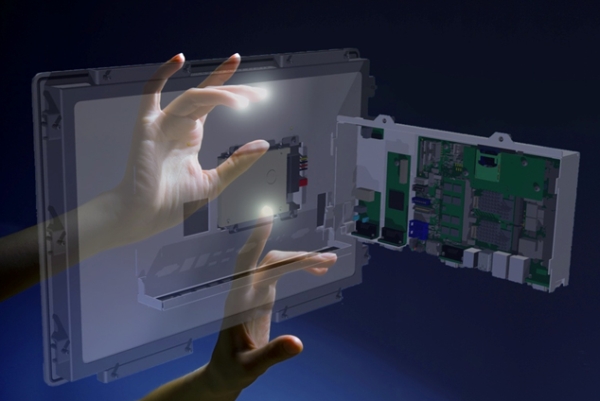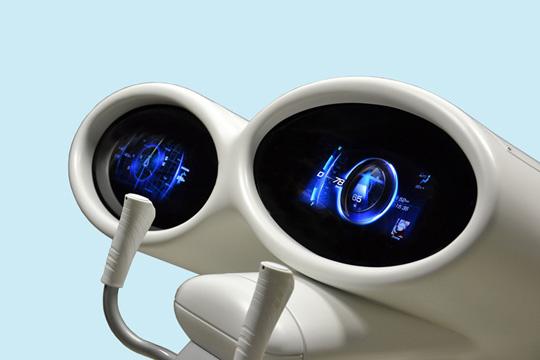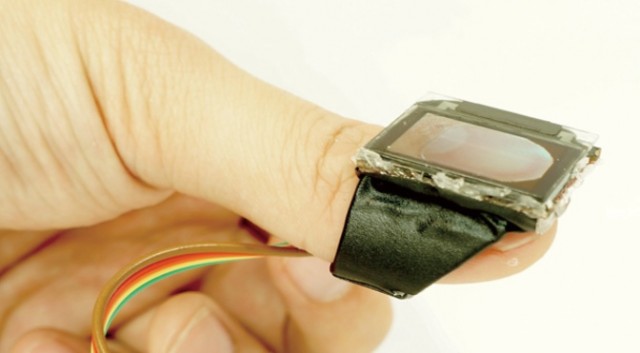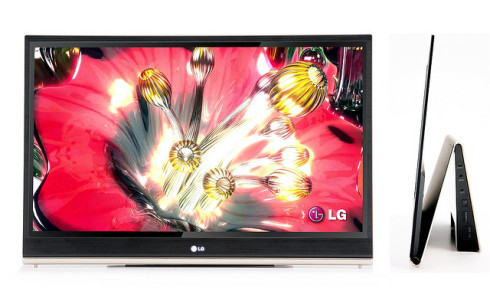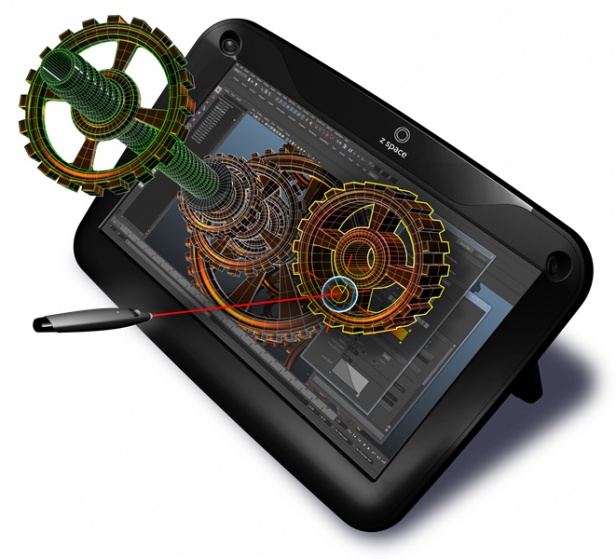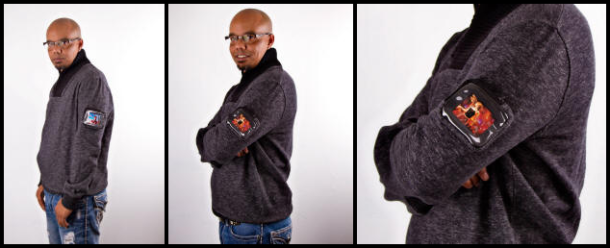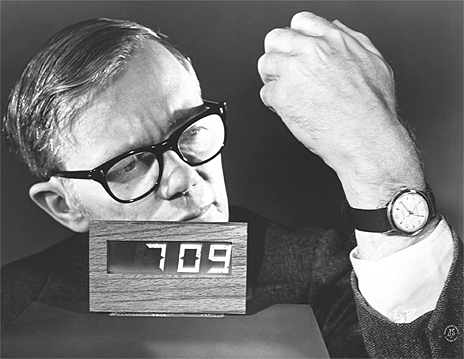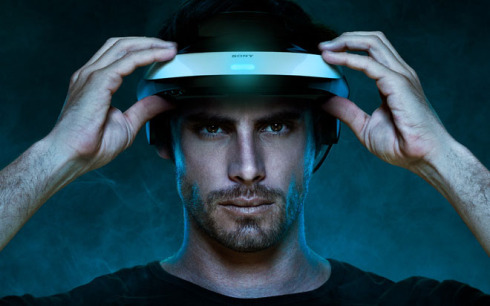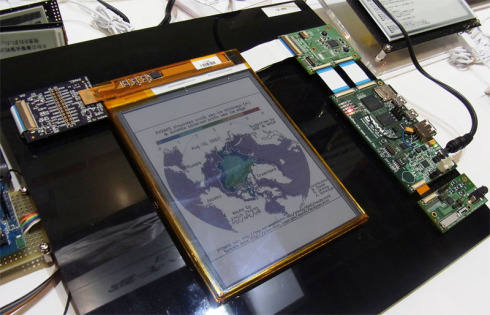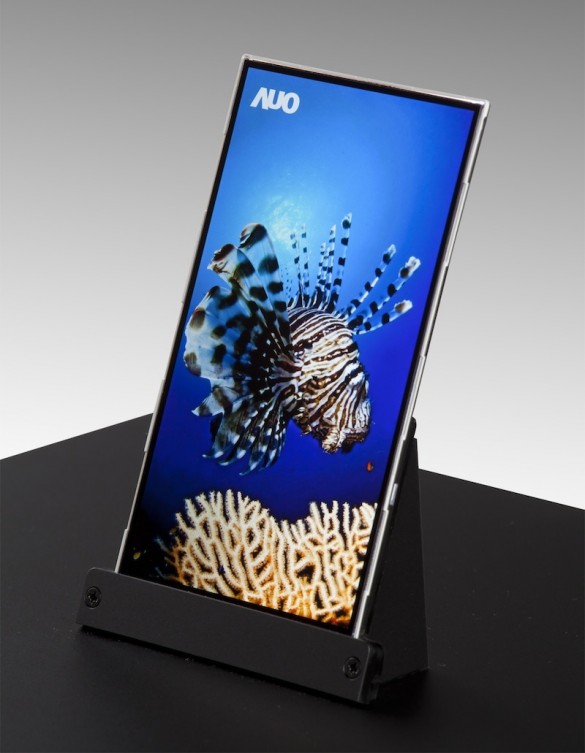Display Technology News Roundup 10.27.2013

Image via Alenia Aeronautica Press Office / The Aviationist
F-35 Program Stops Alternate Helmet Display Development "In a review of the F-35’s flight-test progress in 2011, the Department of Defense identified the HMDS as one of several program risks. It found that the helmet system was deficient in the areas of night-vision acuity, display jitter during aircraft buffeting and image latency from the F-35’s electro-optical distributed aperture system, which combined detracted from mission tasks and the use of the display as a primary flight reference. The Gen 3 helmet “will include an improved night vision camera, new liquid crystal displays, automated alignment and software improvements,” according to the JPO" via AIN Online
Samsung Display begins LCD production in China "Samsung Display, a unit of Samsung Electronics Co, and domestic competitor LG Display are both building multi-billion dollar flat-screen plants in China, to help them compete more effectively against little-known Chinese rivals. Chinese companies such as BOE Technology Group and TCL Corp's LCD unit CSOT are undercutting the world's two biggest LCD makers and winning market share with robust sales to local TV manufacturers." via Reuters
Apple's War on Pixels "Commodification is an inherently boring process, particularly when it comes to technology: over time, products that were once unique and expensive become less so. That process has pushed HDTVs, wireless routers, and Bluetooth speakers into living rooms en masse as the technologies behind them have become more and more generic. One technology most visibly marked by commodification is displays—in particular, high-resolution displays so packed with pixels that human eyeballs cannot perceive the individual dots that make up the image" via The New Yorker
The new manufacturing tech that will bring high-resolution displays to every device "Applied Materials’ three new manufacturing machines should help cut costs by improving quality control and flexibility at multiple points in the production process. The new AKT 55KS PECVD is a Plasma Enhanced Physical Vapor Deposition system that’s designed to better control the amount of hydrogen gas inside the manufacturing chamber, allow for a more uniform distribution of deposited material, and eliminate defects. The other two machines — the AKT PiVot 25K DT and PiVot 55K DT are essentially the same system, but built at two different sizes." via ExtremeTech
Augmented reality system makes cars see-through "Michel Ferreira and his colleagues at the University of Porto in Portugal developed the See-Through System, which uses a lightweight heads-up display to look "through" a truck up ahead. The system works by looking through a camera that records the trailing driver's perspective. Software recognises the back of the lead vehicle, and replaces it with a video feed from a webcam mounted on that lead vehicle." via New Scientist
Display database for engineers Search thousands of display panels by multiple characteristics and compare results side-by-side using the display database multisearch.
Mitsubishi Shuts Down Consumer Video Division "Mitsubishi was always a big player in the RPTV category...,and near the end of its run it created some truly gargantuan rear-projection displays. But the market moved on, wanting flat panels instead of floor standers, and unfortunately Mitsubishi couldn’t refocus fast enough to keep its head above water. So if you liked Mitsubishi’s gear, I’d watch big resellers and liquidators for some serious discounts between now and the holiday buying season." via Technology Tell
Technology to Humanize the Brand "In today’s virtual mannequins, high-resolution optics project a video onto a screen, usually made of cut glass or acrylic shaped in the silhouette of the mannequin speaker and coated with a semi-transparent film. Viewed from the side, the mannequin is only about one cm thick; viewed from the front, the cut-out resembles a person. Improvements on current technology are bringing these mannequins to life. Light efficient projection technology is increasing brightness from today’s average 3000 to 4500 lumens to well beyond 6000 lumens so that the image is crisp and distinctive, even in a brightly lit room." via Wired
Disney tech lets users feel 3D objects on flat screens "Ordinarily, when we feel a bump as we're sliding our finger across a smooth surface, we do so because the increase in friction created by the bump causes the skin in our fingertip to stretch ever so slightly. In order to simulate that friction, the Disney team uses a conductive display in which the electrostatic forces between the finger and the glass can be modulated by applying more or less voltage to the screen." via Gizmag
Semiconductor Will Help Develop Hi-Def Flat Panels "Researchers at the National Institute for Materials Science have developed a pixel switching semiconductor, which will be the key to driving next-generation displays by using an oxide film with a new elemental composition. ...The research results are expected to be effective not only for reducing the power consumption of displays which consume about half of the power in rapidly diffusing smartphones, but also for achieving higher frequencies to realize higher-definition TVs." via Controlled Environments
Does test equipment really need knobs and displays? "Put your tablet wherever you wish. Or remote the display to your laptop that is supporting some humungous monitor. Why settle for the fixed sizes of displays offered by vendors when you can buy high resolution displays at your local electronic retailer larger than your entire lab bench if you wished?Will engineers accept the remote display concept?" via EDN
Do you have content to share with Display Alliance? Anyone can post press releases, white papers, commentary, videos, and more in the open section.
A True Revolution in Display and Touch-screen Manufacturing Begins "Cambrios (Sunnyvale, California) announced the formation of TPK Film Solutions, Ltd. (TPKF), a joint venture with TPK, the world’s largest touch solution provider, and NISSHA, a leader in film-based touch sensors. TPKF’s mission is to “produce ClearOhm silver nanowire-based film in a roll-to-roll process allowing original equipment manufacturers (OEMs) to bring to market cutting-edge touchscreens for new products and applications worldwide,” Cambrios announced in its press release. ...All of this may not sound too exciting until you understand not only that transparent conductors are essential components of most displays and touch screens, but also that ITO has significant limitations." via HDTV Magazine
Nvidia Ends Screen Tearing With G-Sync Display Technology "Conventional LCD monitors have fixed refresh rates, typically 60hz, which the GPU must work with, but with G-Sync, a module goes inside the monitor that transfers control of the refresh rate to the GPU. Because the display adapter controls the timing, the two are always synchronized, eliminating screen tearing without sacrificing performance." via The Escapist
Honeywell Nearing Launch Of Touchscreen-Enabled Avionics "Along with qualitative assessments of the pilots’ workload, researchers used electromyogram measurements of muscle activity to gauge the pros and cons of mounting locations and touch technologies. The researchers confirmed that the best fit for touchscreen displays on large flight decks for high-end business jets or air transport aircraft is on the center console, or pedestal. “From a pilot workload perspective, if you put touch there, that’s the best place for it. In a smaller flight deck, pilots are used to looking at bezel buttons and knobs on the forward displays, so touch makes more sense there.”" via Aviation Week
Robotic testing finds touchscreen inaccuracies at edge of iPhone display "Using a robotic finger and a specialized suite of test software, Finnish automated testing company OptoFidelity found that Apple's latest handsets accurately detect touch inputs only across a small swath of their displays, roughly equating to the location of the on-screen keyboard. The iPhone 5s and 5c, according to the company, suffer from "extremely bad" touch performance near the edges of the display." via Apple Insider
New multi-touch sensor is customizable with scissors "Together with researchers from the MIT Media Lab, they developed a printable multi-touch sensor whose shape and size everybody can alter. A new circuit layout makes it robust against cuts, damage, and removed areas. The researchers have presented their work at the conference “User Interface and Technology” (UIST) in St. Andrews, Scotland. The sensor remains functional even when cut to a different shape." via R&D Mag
Are you an engineer or have display expertise? Email jason@displayalliance.com to be featured in the interviews section.
Tourist site desperate to stop graffiti adds vandal-friendly touchscreens "Officials in Wuhan's Yellow Crane Tower Park are determined to stop name-etching vandals once and for all, and have rolled out a series of graffiti-welcoming touchscreen displays. Now well-behaved and asshole tourists alike can enjoy the thrill of leaving their marks on priceless antiquities." via Shanghaiist
Existing Inside the Screens "In his TED Talk, Reach into the computer and grab a pixel, Dr. Lee shows some current projects and discusses future possibilities. The talk begins with discussing the boundaries between the user and the screen, and throughout the talk the boundary gets smaller until it no longer exists." via Engineering.com
Wheel-Shaped Molecules Better For Displays "Whereas the usual rod-shaped LEDs can trap up to 80 percent of light generated because light flows from them in only one direction -- known as polarization -- Lupton and his team made a molecule that is "perfectly symmetrical, and that makes the light it generates perfectly random,” he said in a university news release, noting the new organic molecule is known as OLED." via International Business Times
Worlds Largest e-Paper Sign Displayed at UN Headquarters "e-Ink has set a worlds record for the latest e-Paper sign that is installed at the UN Headquarters in New York. The eWall is an intricate combination of architectural, display and network engineering. It stands about 6 meters wide with 231 tiled 7.4″ displays arranged in a grid of 33 displays across by 7 displays high. With an overall resolution of 26,400 x 3,360 pixels, it is perfect to read at long and short distances." via Good Reader
Aerial Imaging Plate turns holograms into touchscreens "Much like a low-quality monitor with a very narrow viewing angle, the AIP’s holographic effect can only be viewed from a very specific location in relation to the projected image. To onlookers, it appears as a regular flat surface, but to a person standing in the sweet spot, the image looks as though it’s floating in the air. In what may seem like a classic case of “it’s a feature not a bug,” Asukanet feels the specific viewing angle requirement is appealing, perhaps as a privacy feature, even though onlookers can see what’s happening on the flat display." via ExtremeTech
What did you think about today's news? Leave a comment here and share your thoughts.
 Display Alliance
Display Alliance





